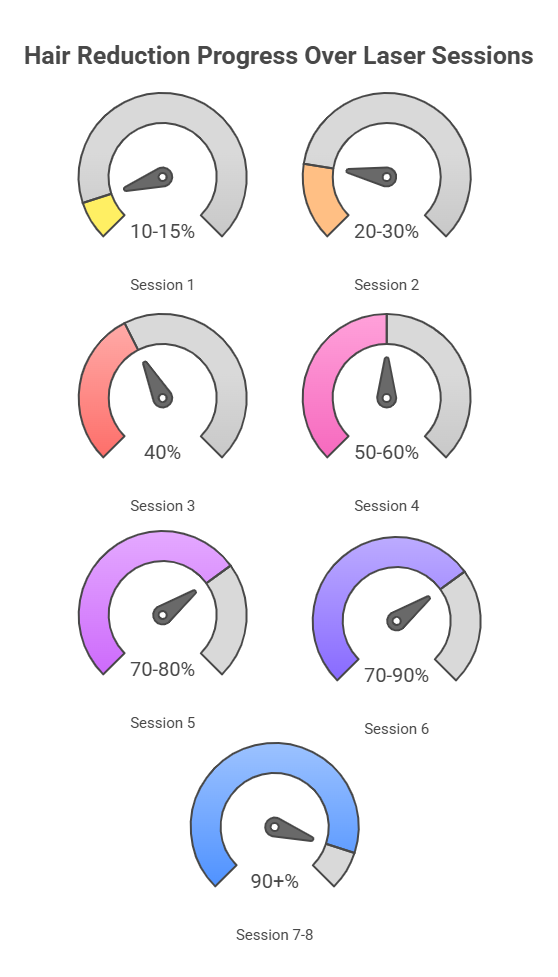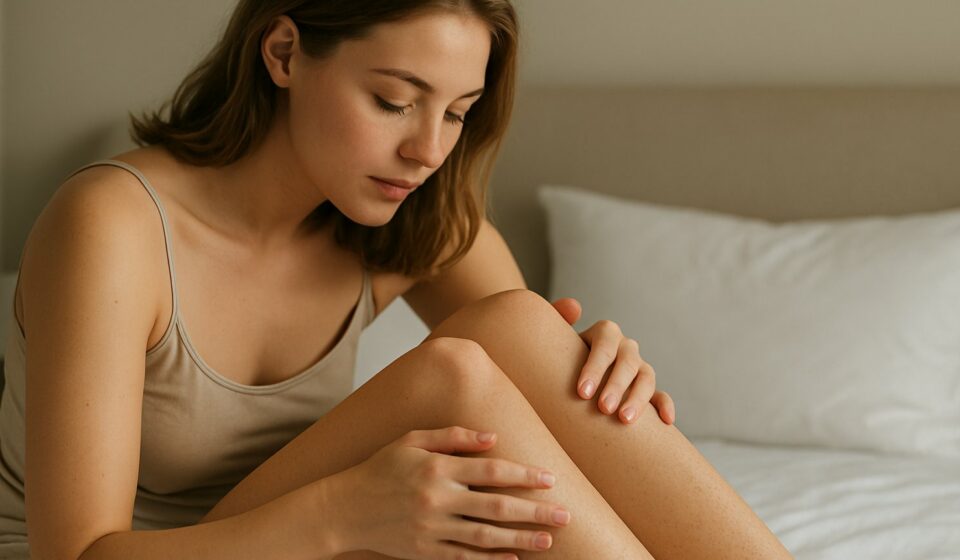Laser hair removal gives long term reduction, and for many clients it means smooth skin for months at a time with only quick maintenance top ups. The end point is about quieter follicles, slower regrowth, and fewer active hairs. How long it lasts after your course depends on hair type, hormones, area treated, and the technology used.
Table Of Content
What does “lasts” mean in practice
Lasers target pigment in the follicle and disable growth cells in hairs that are in the active phase. Because hairs cycle, you need a series of visits to catch each wave. After a complete course, most people see large gaps between regrowth and far fewer active hairs. Maintenance becomes occasional rather than daily. The general science is outlined by the Mayo Clinic.
01. Typical longevity by area
Guide ranges for clients who complete a full course on a professional device.
| Area | After your course | Top up rhythm |
|---|---|---|
| Underarms | Large reduction with very slow regrowth | Every 6 to 12 months |
| Bikini | Long spells of smoothness, finer return | Every 6 to 12 months |
| Legs | Broad clearance, very gradual return | Every 12 to 18 months |
| Face | Marked reduction though hormones influence pace | Every 3 to 6 months |
| Back or chest | Strong reduction, slower density over time | Every 6 to 12 months |
Facial areas tend to need more frequent maintenance due to faster cycles and hormonal influence. Body sites usually keep results for longer stretches.

What affects how long it lasts
- Hair colour and thickness: darker, coarser hair responds briskly and stays quiet for longer. Finer or fair hair needs patience and may need more maintenance.
- Skin tone and wavelength choice: matching Alexandrite, Diode, or Nd:YAG to your skin type improves safety and lets clinics run effective settings.
- Hormones: PCOS, pregnancy, peri menopause, or certain medicines can wake follicles. This changes top up timing, mostly on the face and abdomen.
- Completion of your course: clients who finish the series (usually six to eight visits) enjoy longer lasting smoothness than those who stop early.
- Device quality and cooling: stable energy and strong cooling allow higher tolerated settings, better coverage, and steadier long term results.
02. How many sessions for a lasting result
Most people need six to eight sessions, spaced four to six weeks for face and six to eight weeks for body. You will see shedding after the first visits, then patchier and finer regrowth by session three to four. Comfort minded clients often ask about side effects. Typical changes such as pinkness or tiny swellings around follicles usually settle within two to three days, as noted on Wikipedia.
- Early checkpoint: read what to expect after three sessions.
- End of course: see is six sessions enough for realistic timelines.
The tech choice that supports longevity
Three wavelength systems cover every skin tone with settings that protect comfort and drive efficient results. Our platforms combine Alexandrite 755, Diode 808, and Nd:YAG 1064 in a single unit with integrated cooling.
- Nu TriLaze Plus: built in skin analyser, HD detection, and strong cooling for fast, confident sessions. Nu TriLaze Plus
- Nu eRays Plus: on handpiece controls and reliable comfort which keeps clients on schedule. Nu eRays Plus
- Nu TriLaze Lite: compact, mobile friendly, very low running cost which is ideal for multi room setups. Nu TriLaze Lite
Prefer to compare all systems at once. Visit laser hair removal machines. You can also book a demo or request details including finance options.
03. Make results last even longer
- Finish your course: stopping early shortens the maintenance window.
- Shave only between visits: do not wax or epilate during a course. The root must be present for the laser to find it.
- Protect from sun: avoid tanning two weeks before and after. Use SPF on exposed areas.
- Plan maintenance: one to two quick top ups each year keeps things calm, especially for face and bikini.
- Match wavelength to skin type: darker tones often suit Nd:YAG with longer pulses for comfort and consistency.
Quick answers
- Is it permanent: it gives long term reduction. Many follicles stay quiet for months or years. Some need occasional maintenance due to cycles and hormones.
- How many sessions: six to eight for most areas, with top ups later as needed.
- Is it safe for my skin tone: yes, with the right wavelength and cooling. For deeper tones, read our guide for Afro Caribbean skin.
- Does it hurt: modern cooling makes sessions very manageable. See how painful is laser hair removal for comfort tips.
Dr Majid Zarandouz
Majid holds a PhD in organic chemistry and has been working with laser systems for decades. His career began in the mid-1990s, when he started researching and developing laser-based technologies for medical and cosmetic applications. Over the years, he has combined scientific expertise with practical engineering to design machines that are effective, durable, and straightforward to use in real clinic settings. As director of the British Institute of Lasers, Majid continues to focus on producing equipment that meets professional standards while remaining accessible to businesses of all sizes.

